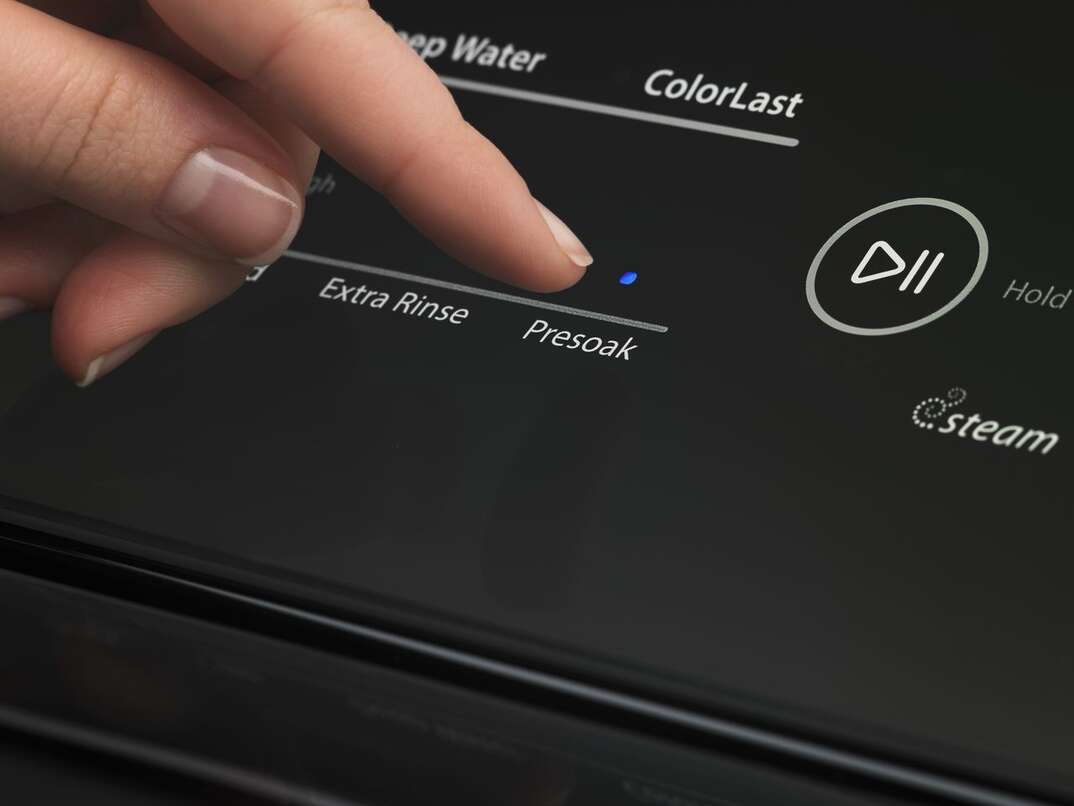TV Terminology 101: Buying Your First TV in a While? Here's What You Need to Know

TVs, like any other modern electronic device, have their own unique set of jargon, terminology and specifications that are likely to confuse even the most tech-savvy consumer. Major advancements in TV technology over the last few years have contributed to a shopping experience that’s overwhelming, to say the least.
In the market for a new TV? Here’s a quick course on modern TV terminology to help you score a great screen, while saving you time (and money) in the process.
Smart TV
As you start shopping for a new TV, the first thing you may notice is the abundance of televisions referred to as smart TVs. Truth is, you’ll be hard-pressed to find a TV that isn’t considered "smart" these days. A smart TV is simply a TV that connects to the internet and has the ability to run a variety of different apps and video-on-demand streaming services.
While the services supported by smart TVs can vary widely, most offer access to streaming services like Netflix, Hulu and Disney+. The best smart TVs might offer games, access to social media apps and can easily act as a hub for other smart home devices like Alexa and Google Home. Some models now even include voice recognition tools.
And though smart TVs are everywhere, it is still possible to purchase a non-smart TV, although you might just have to do some searching. While you may prefer not to have the connectivity that’s native to smart TVs, you might have a hard time finding one with all the performance features you’re looking for. In other words, if you find a non-smart TV, it’s likely to only offer 720p to 1080p resolution and probably not 4K.
Resolution
When buying a new TV, one of the most important things to consider is the screen’s resolution. Resolution refers to the sharpness and overall clarity of an image on a display. Currently, you have four options to choose from: HD, Full HD, 4K and 8K.
Resolution is measured in pixels. A pixel is the smallest unit of a digital image. The more pixels, the better. HD stands for “high definition” and refers to any image over 720 pixels tall, otherwise called 720p. Full HD, on the other hand, can only refer to TVs at 1080p. 4K resolution, or ultra-high-definition, provides images at 2160p. Finally, 8K, the highest resolution available, offers an even higher-definition image at 4320p.
It’s worth noting that unless you’re looking at used televisions, you probably won’t encounter a regular “high definition television.” Most manufacturers have been slowly phasing out regular HD — and even Full HD — televisions in favor of 4K resolution, which is generally seen as the new industry standard.
Aspect Ratio
Often discussed alongside resolution as one of the key determiners of picture quality, aspect ratio refers to the ratio of width to height of the TV screen. Certain aspect ratios are meant to correspond to particular resolutions without stretching or black bars around the screen. If you’re looking at a television over 1080p, you’ll want to make sure your screen is capable of displaying a 16:9 aspect ratio.
Refresh Rate
If you find yourself drawn to fast-moving tv programs like sports, action movies and video games, you make sure you keep an eye out for televisions with high refresh rates.
Refresh rates are measured in hertz and refer to how many times per second the video display is able to draw an image. The higher the refresh rate, the smoother your content appears. Today, most TVs have a refresh rate of 60Hz or 120Hz. Are you an obsessive gamer? Shoot for a TV with 240Hz or higher for a truly immersive gaming experience.
LCD
If you’re relatively new to the TV market, you’ll also need to be familiar with the different TV video displays out there. To understand how each type of screen differs from the next, it’s important to know that a large number of digital TVs on the market are based around LCD technology.
LCD stands for “liquid crystal display.” These screens are generally composed of two sheets of polarized material with a liquid crystal solution between them. When electricity passes through the liquid, the crystals align, and light can pass through. Nearly all LCDs on the market today use LED backlighting, which is to say that the LEDs provide a light source to the liquid crystals. Overall, LEDs make for a brighter, more vibrant image. But, pay close attention: some LCDs have a full array layer of LEDs, while some only have edge lighting, which won't produce as bright an image. If there’s no backlighting mentioned at all, your LCD will be darker and duller than other TVs.
LED
LED — light-emitting diode — TVs are everywhere. LEDs are small semiconductors that light up when an electrical current moves between them. They’re used in backlighting on nearly all modern LCD television screens. They’ve become the standard-bearer for television displays. After all, they offer deeper blacks and a better contrast ratio than anything else. Yet, the type of LED screen you choose is another matter altogether.
OLED
For the best display tech on the market today, look no further than OLED (organic light-emitting diode) displays. The key difference between OLED and regular LED screens is that OLEDs actually create their own light when a current flows through them. Where LEDs are used to backlight LCD screens, OLED screens are their own source of lighting. The result is better image quality, wider viewing angles and a more varied color range.
QLED
Another popular option for TV screens — and one that gives OLED a run for its money — are the so-called QLED displays. QLED stands for “quantum-dot” LED. Where OLED is a completely different type of technology from LCD, QLED is more of a variation on LCD technology. LEDs still provide the backlighting for these screens, but in between the backlighting and the liquid crystals is a quantum dot film. Quantum dots are microscopic molecules and emit their own differently colored light. The result is a brighter image than many OLED screens.
HDR
One of the most popular features on modern TVs is HDR, which stands for “high dynamic range.” HDR makes your display brighter, more colorful and more lifelike. It’s found in the majority of 4K TVs sold today. HDR is able to offer a great image by offering a wider contrast ratio along with higher brightness levels for an unparalleled image. Keep in mind that in order to enjoy the best HDR has to offer, you need to be watching special HDR content. While not everything is HDR, a growing number of streaming services are offering HDR support.
HDMI
When you’re looking for a new TV, you’ll want to make sure that your set has plenty of HDMI ports for your other devices. Generally speaking, you’ll want to shoot for four HDMI ports, but then again, the more, the merrier. Used for picture and sound, HDMI stands for “high-definition multimedia interface,” and it has been used for decades to connect devices like DVD and Blu-ray players, smartphones, tablets, streaming devices, set-top boxes or game consoles to television sets.


